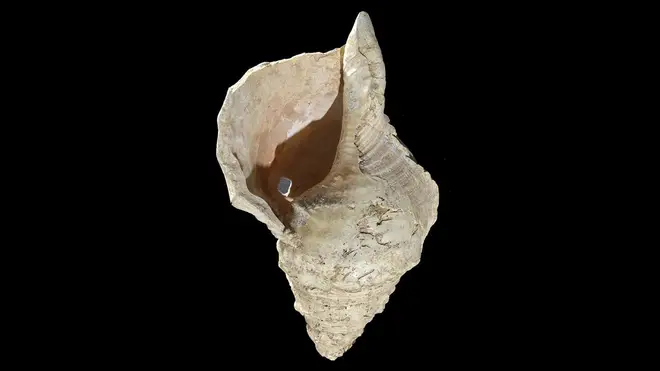This 18,000-year-old shell is ‘oldest wind instrument of its kind’ – hear its haunting sound
18 July 2022, 17:07 | Updated: 18 July 2022, 17:14

The seashell’s music probably hadn’t been heard by humans for more than 17,000 years...
Listen to this article
Scientists have unveiled the ancient song of an Ice Age conch shell, believed to be the oldest known wind instrument of its kind.
The 18,000-year-old shell lay forgotten in a French museum for 80 years. Found in the French Pyrenees in 1931 during the excavation of an archaeological site, it was thought to be a ceremonial drinking cup.
80 years on, researchers studying the archaeological inventory of the Natural History Museum of Toulouse became intrigued by the object. They took a fresh look and concluded that it had been modified thousands of years ago into a wind instrument – carved out, to produce specific notes.
Curious to hear how it would sound today, they asked a French horn player to play it. And in 2021, they released a recording of what it would have sounded like.
“Hearing it for the first time, for me it was a big emotion – and a big stress,” said archaeologist Carole Fritz, the study’s co-author who leads prehistoric art research at the French National Center for Scientific Research (CNRS).
She was worried that, “because it was an original shell and we didn’t know how the shell would react”, playing it might cause irreversible damage to the ancient conch.
Listen below (audio credit: Soundcloud/SmithsonianMag).

Hear the oldest known conch shell horn from 18,000 years ago - Marsoulas conch
Fortunately, the shell coped well, producing close to the notes we would recognise today as C, C sharp and D. “And the sound was truly amazing,” Fritz says.
While many older musical instruments have been discovered – including this 50,000 year old neanderthal flute – Fritz says that the 18,000-year-old conch would be the oldest of its kind known today.
Read more: This 19-foot piano has the longest bass strings in the world – and it sounds huge
The instrument was left behind by the Pyrenean Madgalenians, who lived in the Marsoulas cave about 18,000 years ago.
Philippe Walter, director of the Laboratory of Molecular and Structural Archaeology at Sorbonne University and co-author of the research, said that on scanning the conch, he found that the ancient musicians deliberately sliced off the tip of the shell, and made holes through the shell’s coils through which they likely inserted a small mouthpiece.
This technique likely made it easier to blow air into the shell, and could have helped control the amount of air blown in.









































